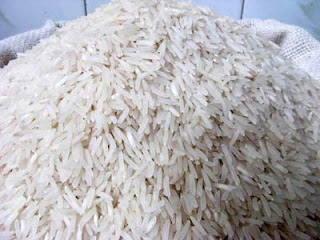Irri 9 is yet another type of medium long grain non-basmati rice produced in Pakistan, which is very popular in the African and Bangladeshi markets. Irri has two main varieties which are Irri 9. Irri 9 has a long grain size then Irri 6. Though Irri 6 has a wider width then Irri 9. Basmati rice Irri rice is mostly grown in the province of Sindh and southern Punjab. The temperature in the Interior of Sindh (24.52° N 67.03° E) makes Irri the perfect place to grow. The main districts where IRRI is grown are Larkana, Dadu, Nawabshah, Sukkar and Jacobabad.
At Susaaf International we don’t take our commitment to maintain quality as a basis of competing with our competitors in exporting this IRRI-9 quality. Many people prefer the muggy touch this rice has to offer. Much of Pakistan's export of IRRI-9 goes to the Middle East, Bangladesh, African Countries & Philippines.
IRRI 9 Long Grain Rice
| Variety: | IRRI 9 Long Grain Rice |
| Crop Year: | 2009 - 2010 - 2011 |
| Polishing Grade: | Single / Double / Pearl / Silky Polish |
| Moisture Content: | 13% Maximum |
| AGL: | 7.0 mm |
| Damaged / Shriveled / Yellow: | 1.5 % |
| Broken Grains: | 2% Maximum |
| Chalky Grains: | 3 % Maximum |
| Contrasting Varieties: | 7% Maximum |
| Foreign Grains: | 0.2% Maximum |
| Foreign Matter: | 0.1% Maximum |
| Paddy Grain: | 0.2% Maximum |
| Under Milled Red Stripped | 2% Maximum |
| | ||
| 1121 White Rice | Click Here | |
| IRRI 6 Long Grain White Rice | Click Here | |
| Super Kernal Basmati Rice | Click Here | |




















 With advanced technology from Buhler in Drum Graders, Plansifters and Indented Cylinders, working at three different stages, a uniform optimum grain length is achieved. The uniform grain length renders a nice appearance to the finished product and adds to the presentation (before and after cooking).
With advanced technology from Buhler in Drum Graders, Plansifters and Indented Cylinders, working at three different stages, a uniform optimum grain length is achieved. The uniform grain length renders a nice appearance to the finished product and adds to the presentation (before and after cooking).








 Selection of paddy is a process where a rice mill needs to devote most of its energies, expertise and time. Quality of final product largely depends upon the paddy procured. Many rice mills avoid to indulge in such a laborious process and purchase semi-processed rice from brokers instead of paddy from farmers. Unfortunately, this cannot be done without compromising on quality.
Selection of paddy is a process where a rice mill needs to devote most of its energies, expertise and time. Quality of final product largely depends upon the paddy procured. Many rice mills avoid to indulge in such a laborious process and purchase semi-processed rice from brokers instead of paddy from farmers. Unfortunately, this cannot be done without compromising on quality.
 Literature in local language is also distributed amongst farmers giving them specific instructions on issues like use of fertilizers, pest-control, storage of paddy etc.
Literature in local language is also distributed amongst farmers giving them specific instructions on issues like use of fertilizers, pest-control, storage of paddy etc. 









